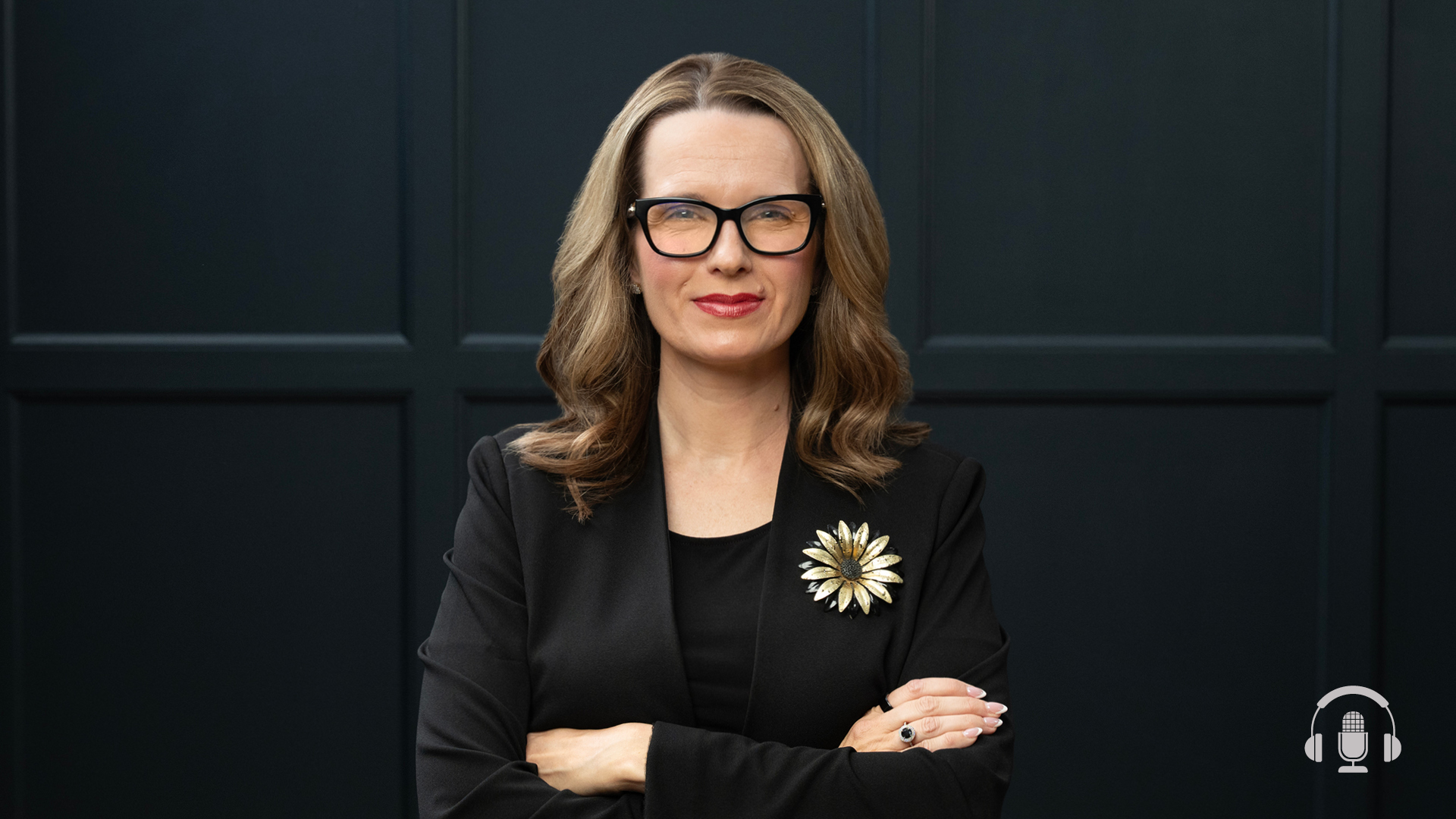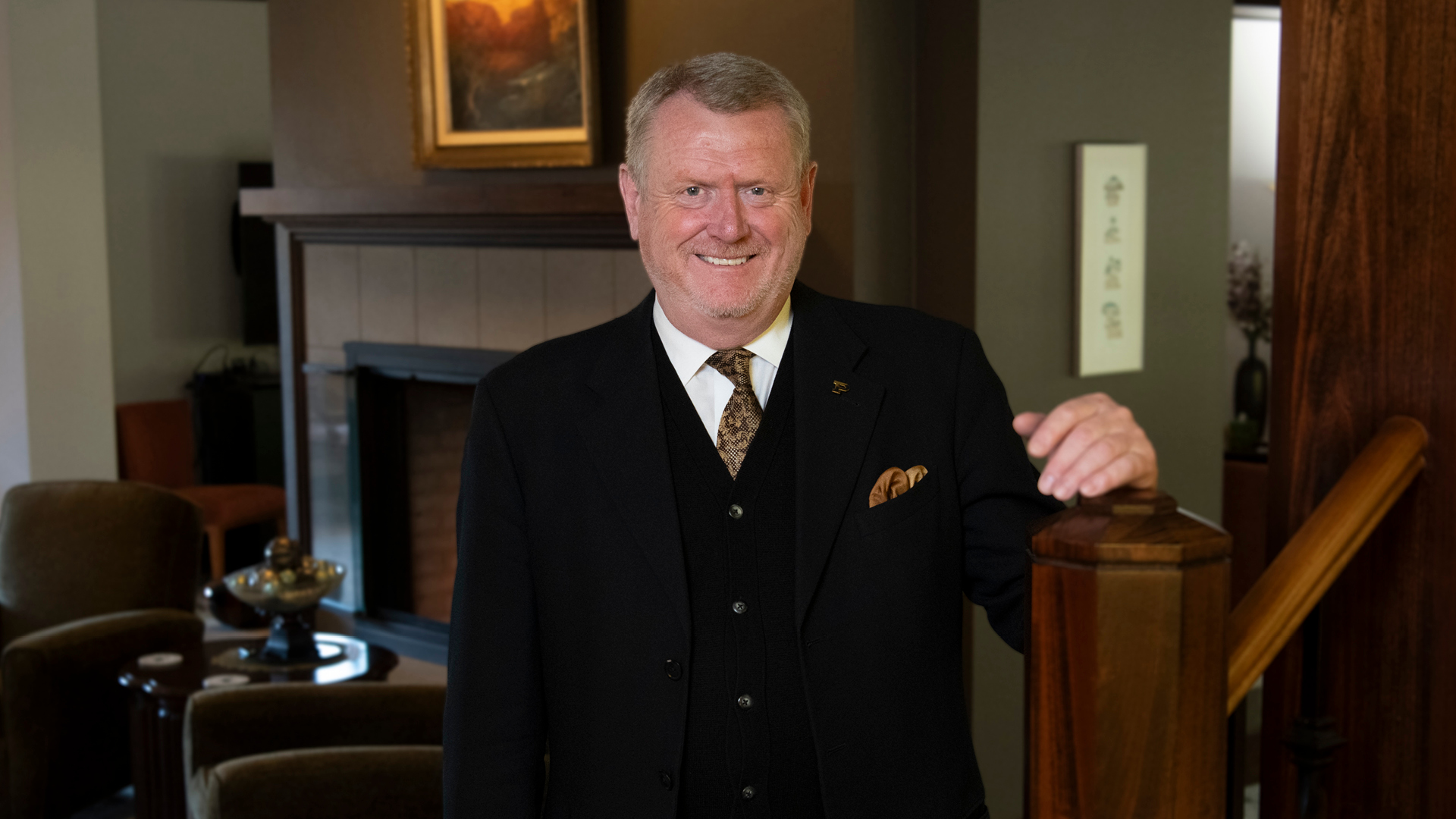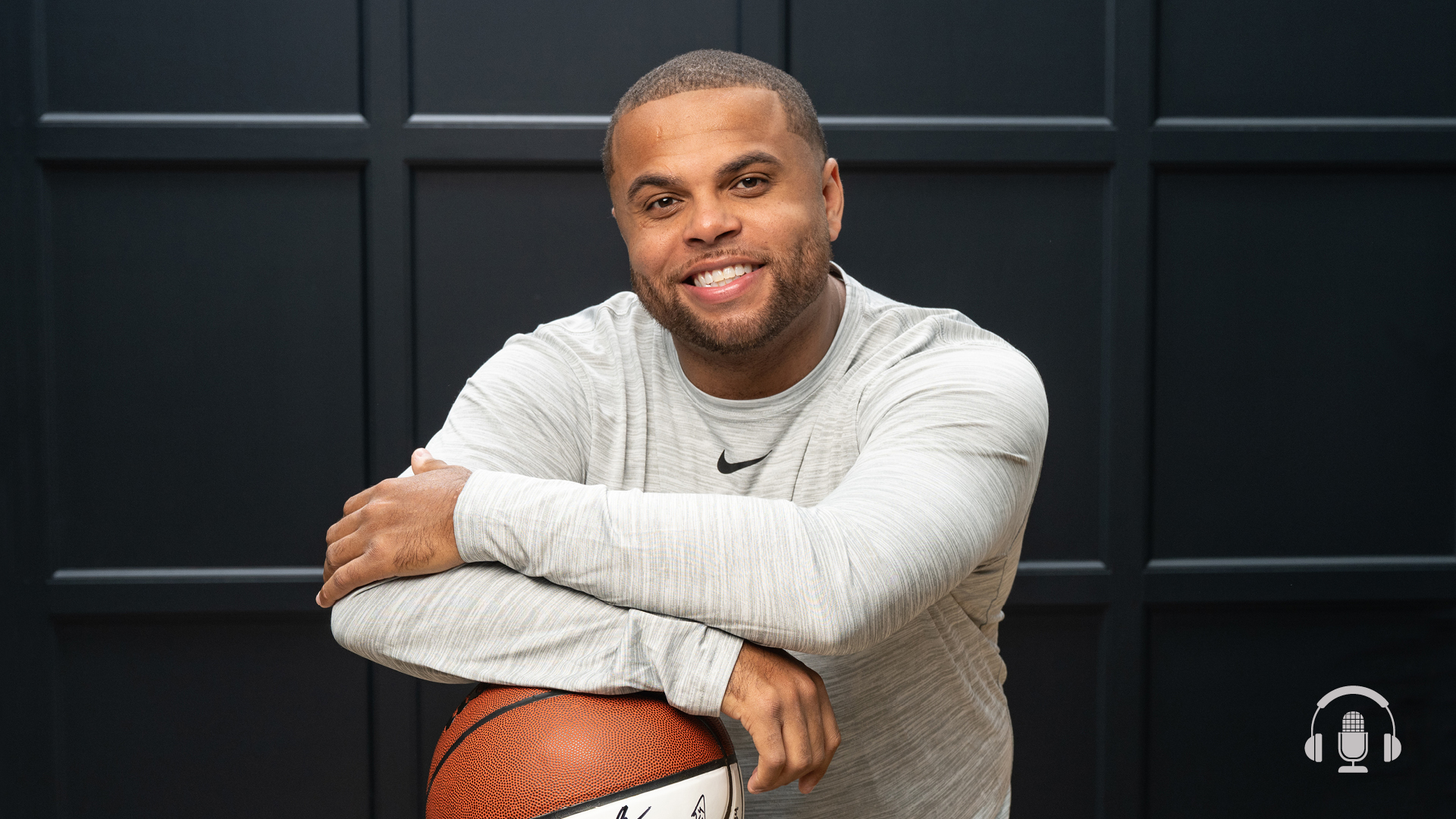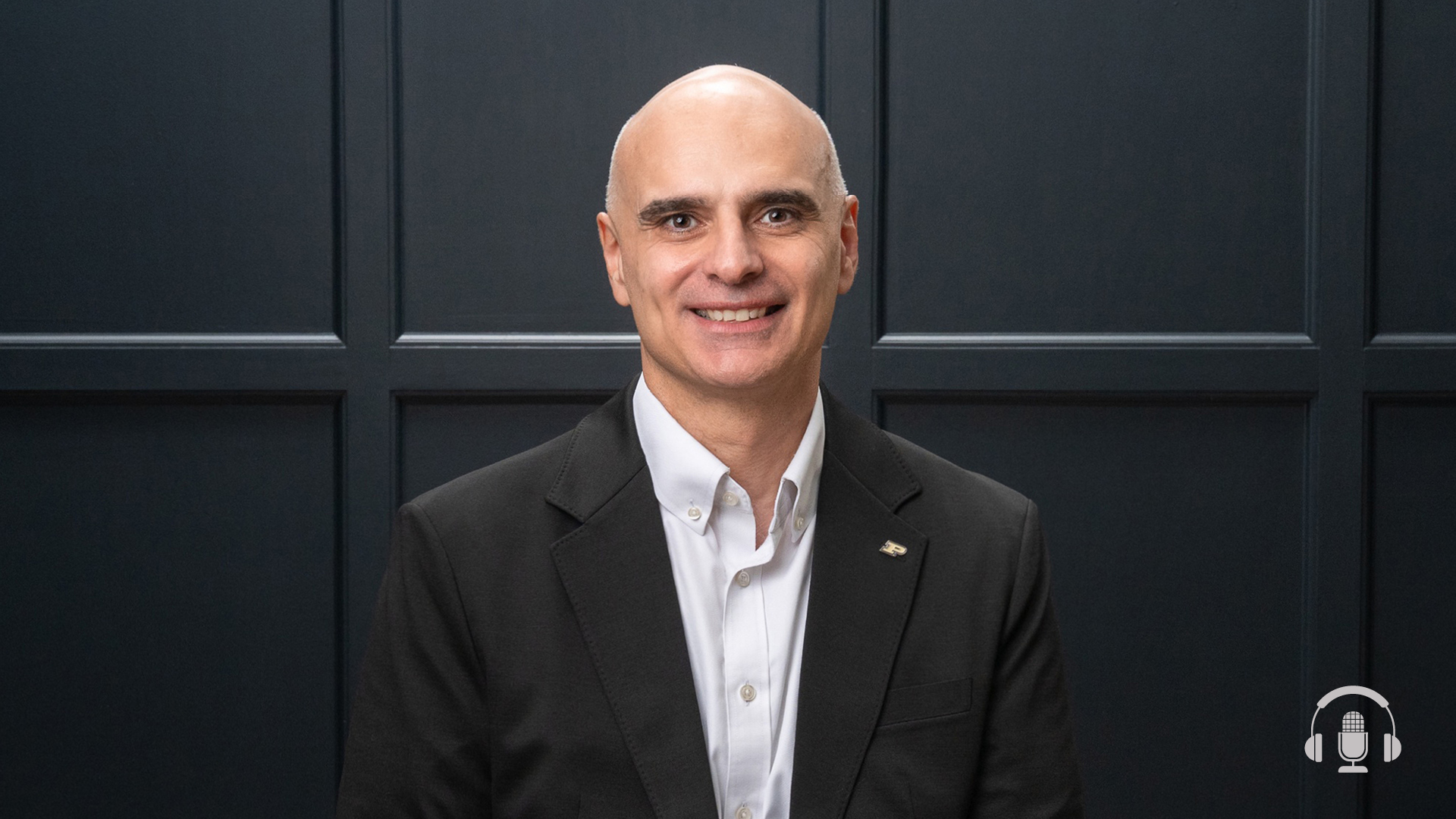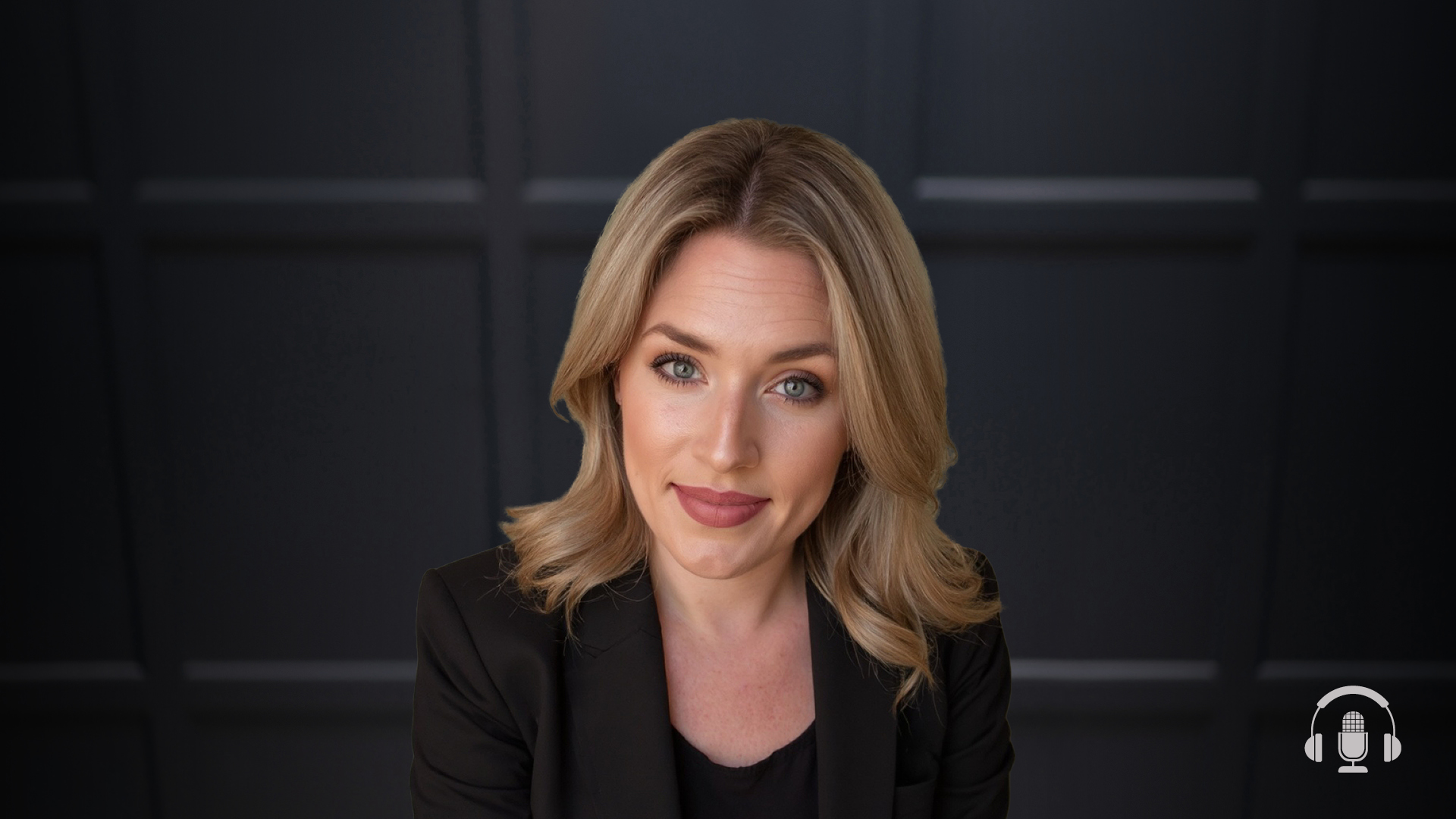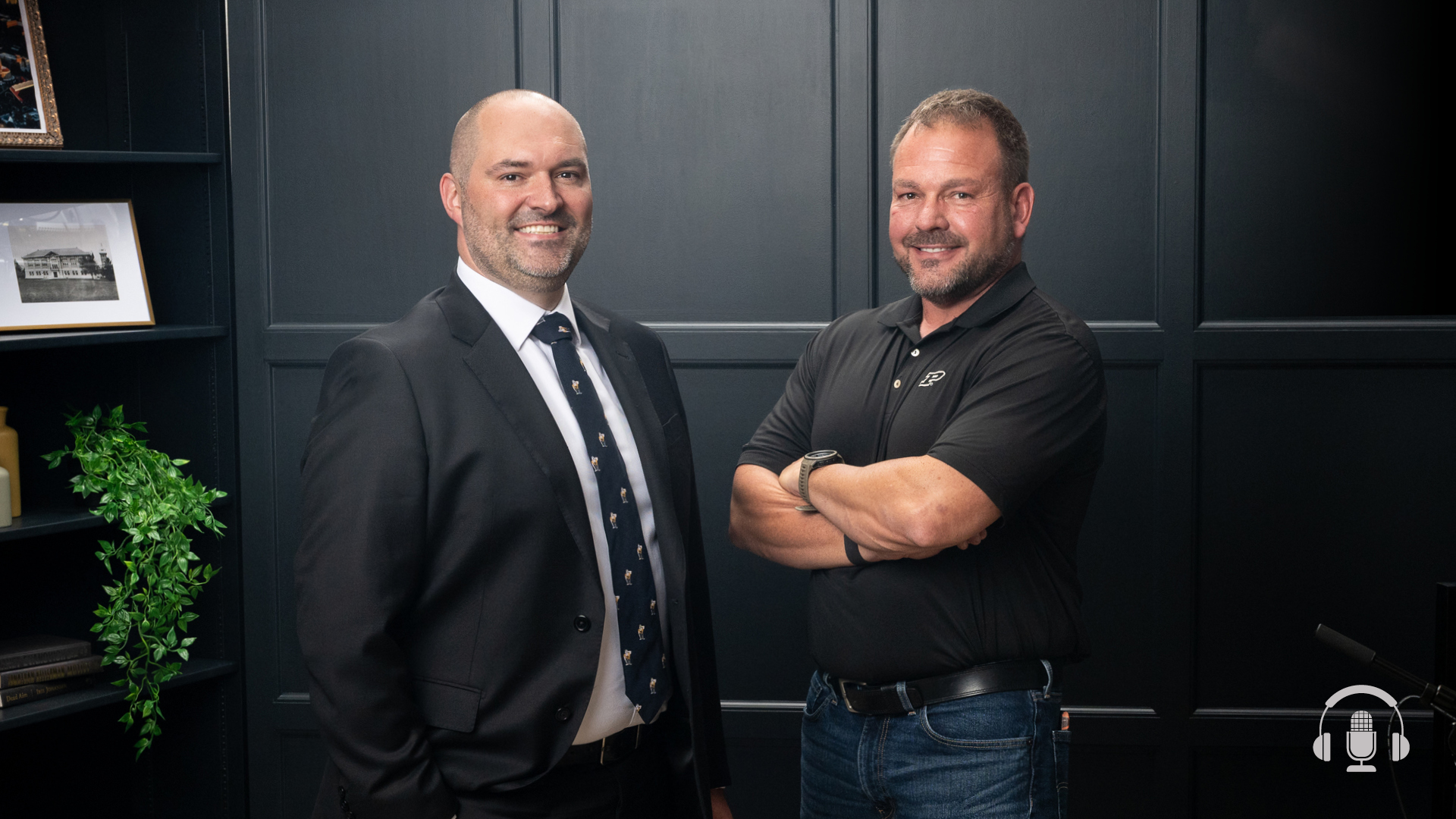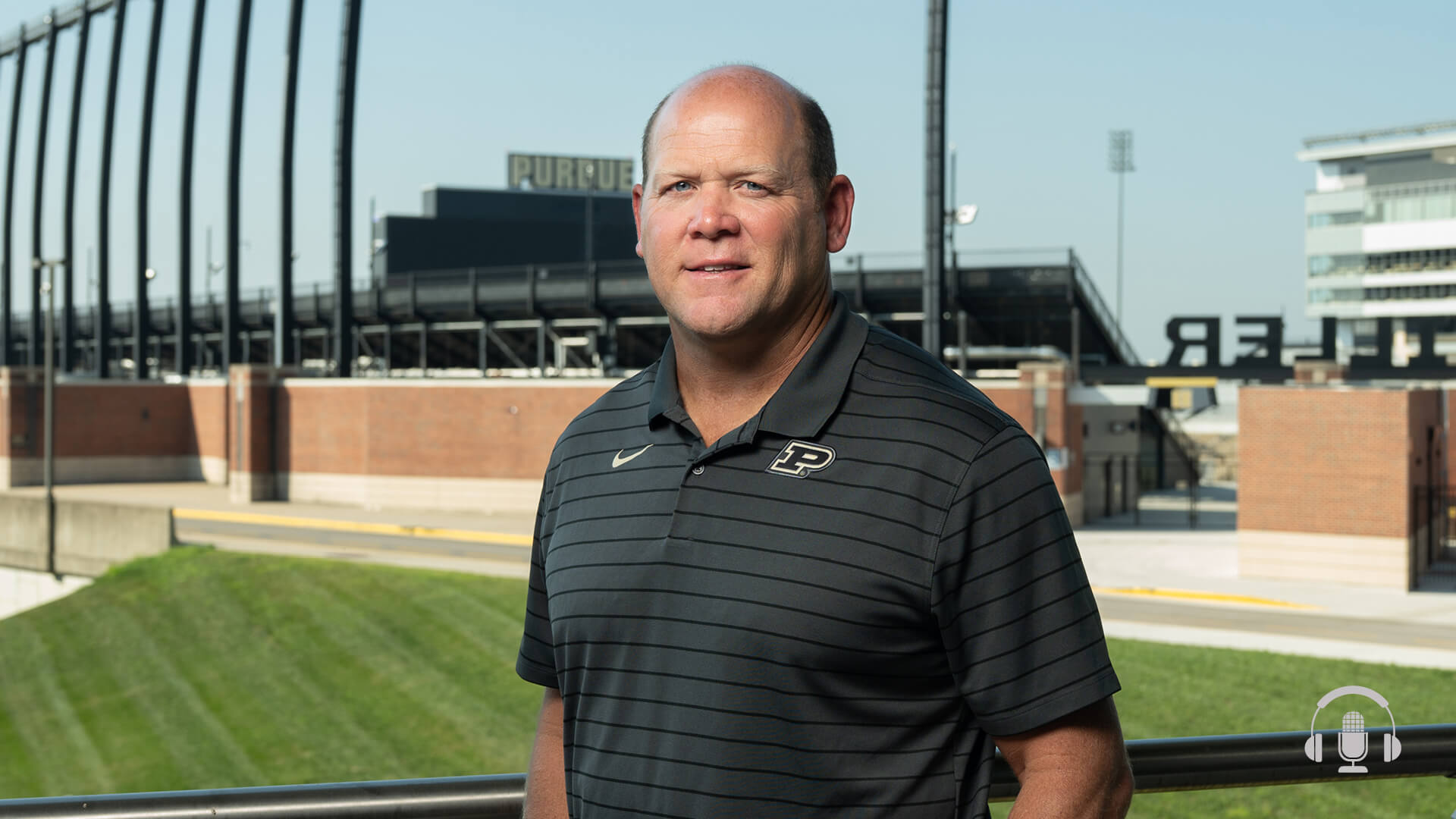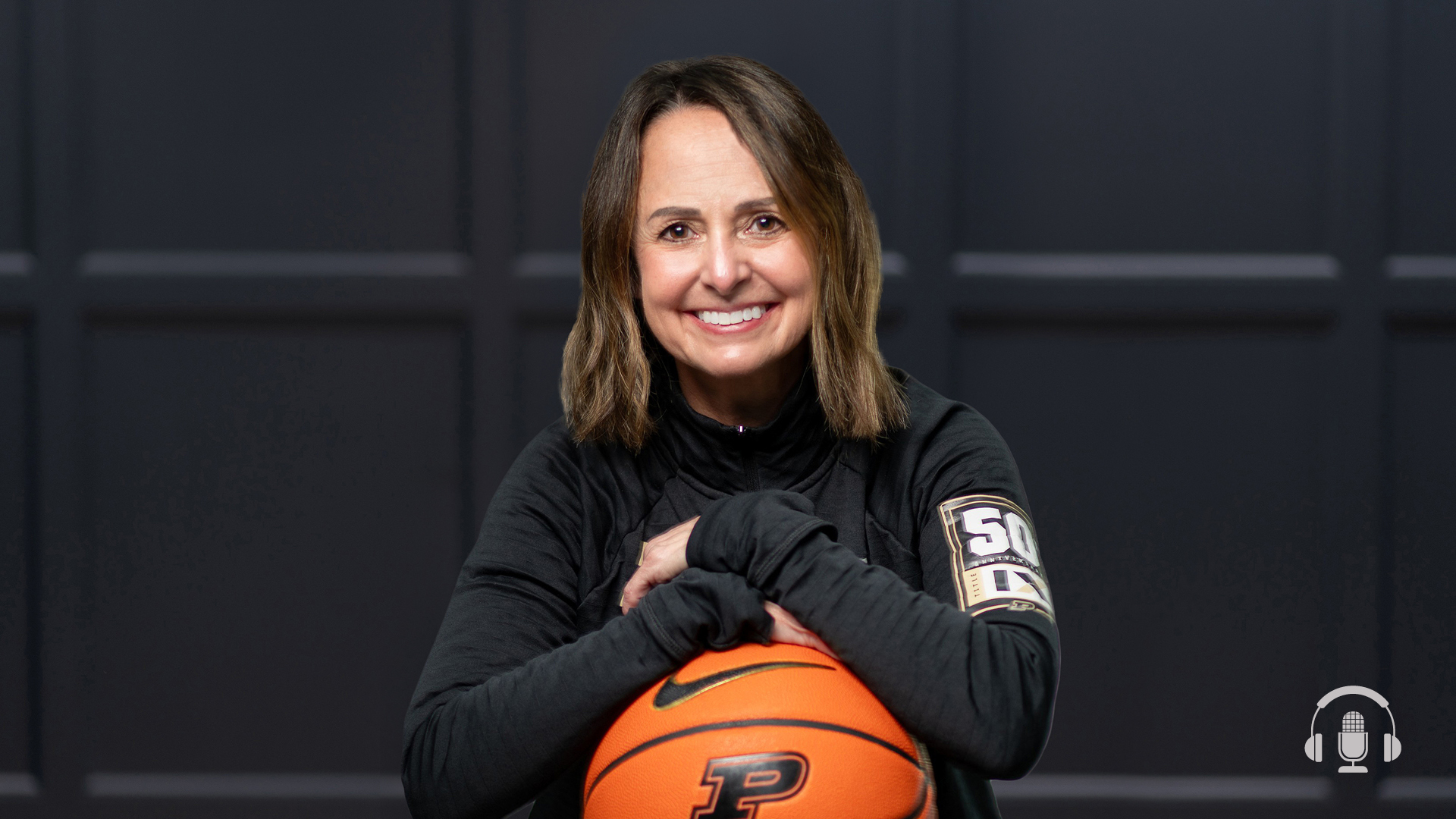Podcast Ep. 69: Purdue Alum, TikTok Star Phil Cook Celebrates ‘Chem-o-ween’
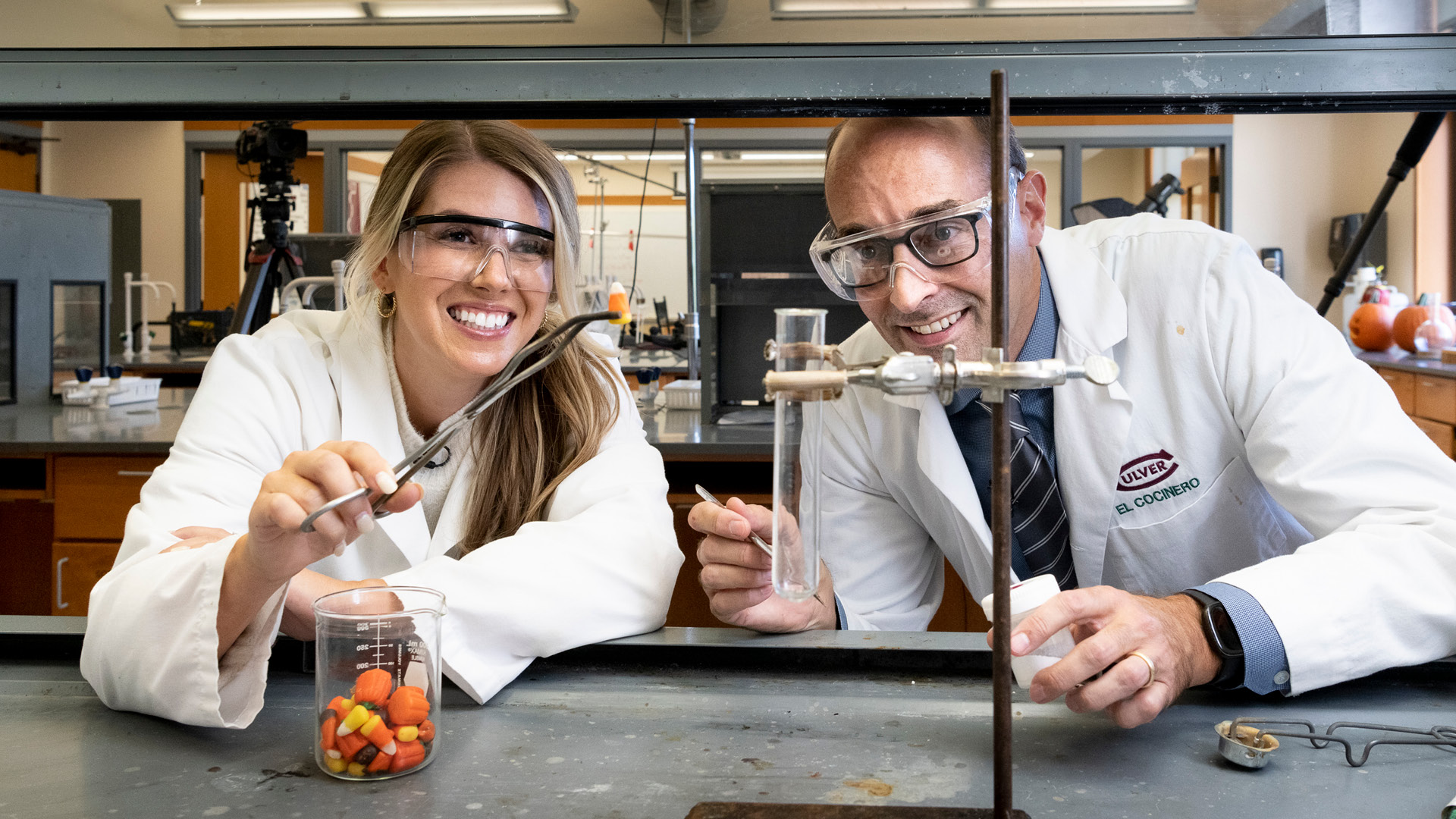
In this episode of “This Is Purdue,” we’re talking to chemistry teacher and TikTok superstar Phil Cook.
Listen as Phil (BS chemistry education ’00, MS education ’13) discusses his passion for education, his rise in Internet fame after just one TikTok video and why he believes Purdue is the best place for science and engineering.
Join the podcast team on a field trip to Culver Academies, where Phil teaches, for a firsthand look at his viral Halloween experiments, including an exploding pumpkin, liquid nitrogen marshmallows and flaming candy corn.
Tune in (and be sure to watch our video content on Purdue’s YouTube channel) as Phil presents his special “Chem-o-ween” tricks and treats.
- Follow Phil on TikTok @ChemTeacherPhil.
- Check out our “This Is Purdue” podcast videos on YouTube.
- Follow Purdue University on TikTok @LifeAtPurdue.
Full Podcast Episode Transcript
Phil Cook:
This is Phil Cook at Chem teacher Phil on TikTok, and you’re listening to, This is Purdue.
Kate Young:
Hi, I’m Kate Young and you’re listening to, This is Purdue, the official podcast for Purdue University. As a Purdue alum and Indiana Native, I know firsthand about the family of students and professors who are in it together, persistently pursuing, and relentlessly rethinking. Who are the next game changers, difference makers, ceiling breakers, innovators? Who are these boiler makers? Join me as we feature students, faculty, and alumni, taking small steps toward their giant leaps and inspiring others to do the same.
Phil Cook:
The campus, I feel like has exploded since I was there, which just means people see what I experience and they see the value of it. I can only imagine what kind of experience kids are having now on campus.
It’s all you.
Kate Young:
It actually scared me, too.In this episode of This is Purdue, we’re talking to Purdue alum Phil Cook. Phil is a senior science instructor at Culver Academies in Culver, Indiana, and he’s a TikTok superstar with more than 3.7 million followers. TikTok is a social video sharing app with more than 1 billion active users. It’s also the fifth most popular social media app in the entire world. Phil was excited to present us with some special Halloween, or as this boiler maker calls it, Chemo-ween Tricks and Treats.
Now, this is a special episode of This is Purdue for several reasons. One, the podcast team got to take a field trip to Culver Academies to check out Phil’s viral Chemo-ween experiments firsthand inside his classroom lab. Two, I got to assist with these experiments and even had my hand lit on fire. Let me tell you the amount of trust I had in Phil for this one. Whew. And three, Phil has an interesting story that is different from the others you’ve heard on this podcast.
It was also exciting to feature our first Purdue education major on This is Purdue. But right off the bat, I have to tell all of you listeners out there, you’re going to want to watch Phil’s experiments too. So after you listen here, head over to YouTube, youtube.com/Purdue to check out all of the action. I will, however, give you a little sneak peek into these experiments right now. So first off, there was the candy corn Chemo-ween trick.
Phil Cook:
All right, so we’re in the lab. We’re going to do a couple experiments together. The first one that I’d like to have you participate with me in, is the first one that I show my students in chemistry, and it involves this white chemical, it’s called potassium chlorate. We’re going to put a little bit of it in this test tube and then I’m going to melt it. And I’ve already talked to you about what your role is. Your role is to handle everyone’s favorite candy corn.
Kate Young:
Okay.
Phil Cook:
Okay. Ready?
Kate Young:
You ready for me.
Phil Cook:
I’m ready. Whenever you’re ready.
Kate Young:
Okay. Okay. So what did it just do to the candy?
Phil Cook:
It was a rapid oxidation and reduction. So basically you’ve converted that candy corn pretty much into carbon. You can see the carbon right there.
Kate Young:
Okay. Then we had the exploding pumpkin.
Okay, Phil, it’s almost Halloween. We’ve got a pumpkin. Tell us what you’re about to do next.
Phil Cook:
I’m going to do a little demonstration called the self-carving Pumpkin. Self-carving Pumpkin is a chemistry demonstration that should not be tried anywhere by anyone other than a trained professional ever. And you’ll see why very shortly.
Kate Young:
Okay. Now you said this is going to be-
Phil Cook:
This is very loud.
Kate Young:
… very loud. Okay.
Phil Cook:
Very loud. Okay.
Kate Young:
This is my cue to step out.
Phil Cook:
So, when I do the countdown, then you just-
Kate Young:
Okay.
Phil Cook:
… distance yourself a little bit. Okay?
Kate Young:
Okay.
Phil Cook:
We start the reaction with a little bit of water. I’m just going to use distilled water here, and it’s perfectly safe. I want you to just kind of peer in and tell me what you see when I add the water. Ready?
Kate Young:
Oh, it’s fizzy. It’s bubbling.
Phil Cook:
Yeah.
Kate Young:
There’s a little smoke.
Phil Cook:
Yeah. There’s some gas being produced.
Kate Young:
Okay.
Phil Cook:
Now you want to step back.
Kate Young:
Okay.
Phil Cook:
And we’re going to let this reaction go for a little bit.
Kate Young:
Woo. Yeah, you can smell it.
Phil Cook:
Yep. I think we’re ready.
Kate Young:
Okay.
Phil Cook:
Here we go. In 3, 2, 1.
Kate Young:
That was awesome.
And then Phil lit my hand on fire with bubbles and water. This one kind of felt like when Purdue’s big bass drum rolled over on top of me. I was really nervous. So don’t mind my scream.
Is my hand wet enough?
Phil Cook:
Yes.
Kate Young:
Okay.
Phil Cook:
Go ahead and grab some bubbles. Perfect. Okay. Come over here. I’ll fix it.
Kate Young:
[inaudible 00:04:50].
Phil Cook:
I’ll fix it. Lock that elbow. Okay. Flat palm. Ready? Going to be over in a second. Thumb, tuck your thumb. One, two.
Kate Young:
Ah. It happened so fast.Finally, we got the whole This is Purdue team involved and tried some of Phil’s liquid nitrogen marshmallows.
Phil Cook:
Your glove. You don’t want a glove hand.
Kate Young:
This is so weird.
Speaker 3:
Oh, my God.
Kate Young:
Okay. That one, you have to see it to understand what’s really going on there. So remember, be sure to watch all of these Chemo-ween experiments on Purdue’s YouTube channel. We even have some special slow motion video as well.
Okay. We’ll get into Phil’s interview now. When did he first hear about Purdue? Well, he had some family ties to this boiler maker community.
Phil, thank you so much for joining us on This is Purdue. We are so excited. We’re here at Culver Academies in Culver, Indiana. We did a little field trip to come to you. So tell us what was your first impression of Purdue?
Phil Cook:
I heard about Purdue pretty early on. My mom is a Purdue alumni, it was the only place that I ever really thought that I was going to end up going. And that happened to be the case for me. In high school, I think, was when I actually first heard about it in more detail where I was actually curious about going to college.
Kate Young:
Sure.
Phil Cook:
I hadn’t really thought about it much until you get to high school.
Kate Young:
So Phil is clearly in the STEM world as a chemistry teacher, but he actually didn’t head into his Purdue journey knowing he had a passion for education and teaching. He figured that out later.
Phil Cook:
I didn’t go to Purdue starting out in education. I originally, now my memory could be fading, lots of things fade as you get older, but my memory is that I got accepted to Purdue in the engineering school, the end of my junior year, which blows kids today, their mind, because senior year is all about stress, applying to school, getting into school and not getting into school, that sort of thing.
Kate Young:
Right.
Phil Cook:
But I remember my senior year was like, I’m going to Purdue. I’m going to Purdue, I’m going to the school of engineering. I loved chemistry. I loved science. I was going into chemical engineering. That was my path. I was going to take that and run with it. I got to Purdue. I enrolled in chemistry classes and some engineering classes, some programming classes, and my mind changed a little bit, not with the chemistry bit, but I think with the engineering bit. So I’m like, I know I still want to go into science, but not so much engineering.
So I went into food science for a semester thinking that, “Oh that might be fun to kind of work with science related, how we developed foods and that sort of thing.” And then I had a missions trip that I got to go on. I went to a missions trip in Louisiana and I got to work with some first grade kids. Never had I ever thought about teaching kids or what it would be like or if I’d enjoy it. But I loved it. I loved it. I was there for three or four days, worked with these kids, and I remember them. I was teaching them simple things about shapes, colors, that kind of stuff. And they all just kind of hugged me afterwards. And I remember thinking, “Okay, this is a lot of fun. I enjoy this.” And then I went back and I changed my major to chemistry education.
Kate Young:
Never looked back.
Phil Cook:
Never looked back. And another thing I didn’t know I loved until I actually got immersed in it, which is teaching others.
Kate Young:
Was your first job right out of Purdue teaching chemistry?
Phil Cook:
Yeah. I finished my student teaching at Central Catholic in Lafayette-
Kate Young:
[inaudible 00:08:08].
Phil Cook:
… which was an experience in and of itself. And I got hired in Chicago Public Schools. So I taught on west side of Chicago for four years at Roberto Clemente Community Academy. Very different situation from where I’m teaching now. In my classes here, we have about 16 kids, at the most. My first class at Roberto Clemente was 38 kids and we had 32 seats in the classroom. So it was kind of a trial by fire of learning how to give these kids an experience that’s meaningful in the lab-
Kate Young:
Yeah.
Phil Cook:
… especially with science and chemistry, you want to have a hands on experience. That becomes very difficult when you feel like you’re packed into a classroom. But I loved that experience. I think every teaching experience I’ve had has taught me something different about the kind of educator that I am and how I like to engage with students.
Kate Young:
I asked Phil why he chooses to be so hands on with his teaching approach.
Phil Cook:
I think you just learned what works well. And for me what was formative was having classes where there were a lot of kids, huge spread of skills. I have to engage them, help move them forward at least a little bit. And how do I go about doing that? Well, one way that you can do that is you can get their hands on something, you can get them involved in something. You can set little goal posts along the way within the lab work that they’re doing, so that everyone feels a little bit of success. And you can kind of start to tune it to their skill levels.
So now you can be doing a single experiment and you can say, “Sue, I want you to do this a little bit differently, because I know that you can handle a little bit more-
Kate Young:
Right.
Phil Cook:
… intense work with this subject.” And then you might take a couple steps back with some other kids who might need the time to really process or some extra one on one attention. That honestly comes with time. I was an awful teacher my first year. I think that’s a pretty common refrain if you talk to teachers. Your first five years feel like you’re just trying to keep your head above water. Labs were saving for me because it was something that I got geeked out about. And when you get nerdy about something, your kids, even if they’re your students, even if they’re not into the class, they can’t help but be into the activity
Kate Young:
Excited about it.
Phil Cook:
Yeah.
Kate Young:
Do you have any specific stories of students saying, “Wow, Mr. Cook, this experiment that you did really impacted me, and now I want to go major in this or do this.” Do you have any kind of things that you look back on and really impacted you as a teacher?
Phil Cook:
I know there’s kids that I’m still in contact with. They said that science up until chemistry, they never felt like they were a science person. That’s a pretty common experience. And my response to them is always, “You don’t have to be a science person. You just have to recognize that we can all be better at what we want to do. And even if we’re in a class that may not feel like a strength for us, we can always work harder and get better. And that’s all I’m going to ask for you in this class.” And I think that mentality resonated with a lot of kids who may have had a bad experience in-
Kate Young:
Yeah.
Phil Cook:
… previous science classes. There are a couple kids that are now in their mid 30s that came, I was invited on the Today Show to talk about kind of the whole TikTok social media stuff.
Kate Young:
Right.
Phil Cook:
And I messaged a few of my former kids, former students, I shouldn’t call them kids or adults now, they have kids of their own, but former students. And one was from Oak Park and she said, “I had taken chemistry once and I had to drop it because it was such a bad experience. And then I had your class, you just helped me to see that I can do it. I just need to work hard.” And those kind of mentality that you build into kids, this resilience, that kind of stands out as a common trait from the kids I’ve spoken to that have been in my class over the years.
Kate Young:
I know I always was like, “I like reading and writing. I am not good at science and math.” And I don’t even think that that was the case. That was just something in my head because I excelled at something else. That doesn’t mean I was bad at chemistry, so that’s a great mentality to have.
Phil Cook:
Well, and sometimes you don’t have the experience where you’re like, “Oh, I haven’t really had the opportunity to see that I like, because sometimes classes can be taught in multiple ways. If you have a certain experience then you might be like, “This is what science is? Pass.”
Kate Young:
Right.
Phil Cook:
And maybe you have an English class where you’re like, “This is great. My eyes have been opened.” This literature is just speaking to me. Well, science can be the same way.
Kate Young:
I asked Phil, if he had any particular student stories that stick out during his career. He discusses a special memory of running into one of his former students.
Phil Cook:
As a teacher, it’s always really rewarding to come across a student that you haven’t seen for a while and they just recant these stories that they remember, that stand out, that are very vivid for them, about when they were a part of your class, that you wouldn’t have thought was meaningful. You didn’t think it was impactful at all. But it clearly had an impact. Case in point, my wife and I, we weren’t married at the time, but we were on the way to that. We went to Rome, we went to Italy. And we were just walking around the streets in Rome, these little narrow streets. And all of a sudden I hear “Mr. Cook? Mr. Cook?” I turned around, holy cow. I ran into one of my students.
Kate Young:
Oh my God.
Phil Cook:
And she was in residency studying medicine and she just gave me a hug and she told me her dad was with her and she’s like, “Oh, this is the greatest experience ever. Your chemistry class, I remember AP chemistry and how you let us try a demonstration that we had to come up with and teach it to little kids. That was the best experience.” And then we went on and talked and talked and talked for a little bit. But yeah, when you think you won’t run into a kid, go to Italy-
Kate Young:
Yeah.
Phil Cook:
… and then randomly you’ll run into one of your former students from 10 years ago.
Kate Young:
What an amazing story to run into a student while abroad. I asked Phil how Purdue prepared him to be a teacher.
Phil Cook:
I had Professor Mary Knockley for my senior kind of, I don’t know if it’s called practicum, but the classes I took right before I did my student teaching. She had us do all kinds of things to help us kind of get in the mindset of, “How do you think a kid? How do you think about what a kid’s going to do in a lab situation?” Because this was specifically for science education majors. We were all chemistry teachers or going to be chemistry teachers. And the idea was she would say, “Okay, Phil, next Thursday, that’s your spot. You’re going to plan an activity, we’re going to do it. You have X amount of time.”
And then behind your back, she would give roles to everybody. So there would be people who are like, you’re the distractor. You’re the person who just had a really hard night and didn’t get any sleep. And so everyone had a role to play-
Kate Young:
Right.
Phil Cook:
… and you would be thinking, kind of macerating on these ideas like, “Oh, what am I going to do to this poor sap when they try and deliver their lesson?” It didn’t make it perfectly authentic, but it definitely made you respond and react in real ways.
Kate Young:
Right.
Phil Cook:
And I valued that.
Kate Young:
And stuff that’s going to happen as you’re teaching, right?
Phil Cook:
Yes. It was as immersive as you could have been without just bringing high schoolers in and doing a lab with them with no teaching experience, which I would not recommend. You want to think through those things.
Kate Young:
As far as Phil’s favorite memories at Purdue, chemistry classes and the memories he made with his fellow chemistry students have always been at the top of his list.
Phil Cook:
I had so many chemistry classes that I’ve really enjoyed. I wish I remember the name of my physical chemistry professor, but he was a Buddhist and he brought Buddhism in all the time in his lectures. I appreciated that so much, because physical chemistry to me, from what I remember, was all solving Schrodinger wave form equations basically where would electrons likely be if they had a certain energy. It was a lot of math for me. Didn’t really see it being something that I would be needing in my profession later on.
For me, the professors stood out. I had the greatest chemistry professors. I feel like I got super lucky with the professors that I had. Professor Vadner, Professor Knockley, Professor Nagishi, all of those people I can say, “They taught me chemistry.” I remember Professor Nagishi being excited, and this was a low level chemistry class. This is big brain guy. He’s teaching us kind of this low level chemistry, but he was excited about it. That’s the kind of stuff that spoke to me.
I had a lot of professors like that, who just were like, “This is how it applies to your life. This is how you’re actually going to use it. This is why you should care about it.” And I think regardless of subject matter, those kind of people will motivate you to do your best. And at Purdue, I just happened to have a great string of chemistry professors. My fondest memories are kind of working with all the other students that were in the chemistry program. We would huddle up together because the problem sets were intense. We were all in the same class together. The struggle was very real for a lot of these classes.
And you just build a lot of camaraderie because, you know, “Oh, I’m going to be in the class with this person. I’m going to be in the class with this person. And I know they’re really helpful and I know they’re willing to share their notes.” Or, “I know that I can give them my notes if they need to be gone for a day.” That kind of family that you build within the School of Education or School of Science, honestly, for me was really, really a good memory for Purdue.
Kate Young:
As I mentioned at the beginning of this episode, Phil’s Purdue experience was unique.
Phil Cook:
I had an experience, it was pretty typical my first couple years. I lived in the dorms. I lived in Shrieve Hall. And then I rushed Delta Sigma Phi, moved in the following year-
Kate Young:
Wow.
Phil Cook:
… stayed in the fraternity for a year. And then after my whole kind of mission trip thing, I moved into the church, the University Church. At the time, there was a pastor there who would give you a free room. You just had to kind of help out around the church. So I did that. I took advantage of that.
Kate Young:
Yeah.
Phil Cook:
My parents loved it. I’ll tell you this, I can remember we, buddies, we would at the time, Golden Eye was really big on PlayStation. So we would go into the chapel, set up the projector and play Golden Eye in the University Church chapel. I hope that doesn’t get me in trouble. It’s been years, it’s past the statute of limitations, right?
Kate Young:
You’re fine.
Phil Cook:
But anyways, I loved it. I had a great experience with it. Kind of allowed me to have a little bit more freedom. Within the fraternity, I felt like a lot of my fraternity brothers and all that kind of stuff.
Kate Young:
Sure.
Phil Cook:
But I needed a little quiet sometimes.
Kate Young:
Yeah. And then you probably saved a lot of money.
Phil Cook:
I did. And I got to interact with people, because there was just people who’d randomly come in. And I would do my best to lock those doors, but people would find their way in. And so navigating that late at night was an interesting challenge.
Kate Young:
Another thing that’s unique about Phil Cook, he’s a viral content creator who has been featured in national media such as The Today Show and The Kelly Clarkson Show. But how did he gain such a following? Well, for Phil, it sort of did happen overnight.
Explain to our listeners how your TikTok got started. You were telling me a little bit beforehand, but tell us in 2019 the story behind this empire that you’ve built.
Phil Cook:
It doesn’t feel like an empire.
Kate Young:
Okay.
Phil Cook:
I mean, I know that everyone says you’re TikTok famous. It doesn’t feel that way. I still feel like the normal person that I’ve always been, or normal I guess is kind of subjective. But I feel like me.
Kate Young:
[inaudible 00:19:05].
Phil Cook:
It happened, I was just doing what I normally do. So classes here, we teach chemistry for a semester long. So I’ve got eight weeks, 16 weeks to kind of really deal with these kids and teach them some semblance of chemistry-
Kate Young:
Right.
Phil Cook:
… and give them lots of experiences that will lead them down the path of more science or less science or at least, “Oh, I had that science experience.” I like to do demos, demonstrations, and we’ll do some today. And I’m looking forward to doing those. But one of the ones that we’re going to do today was the one that I always start the class off with. And one of the girls in class is like, “Hey, Mr. Cook, you should make a TikTok of this.” TikTok was, to me, completely new. I had never heard of it.
So I’m like, “I have no idea what TikTok is, but I’ll make an account.” So I humored her, made an account on my phone really quick and I’m like, “But you have to shoot it, because I have to be safe. We have to do this a certain way, just behind the blast shield. Boom. I’ll give you my camera, you shoot it, we’ll go from there.” So we did the demo. She shot the footage. She’s like, “Hey, you need to have a song for this.” I’m like, how did I know-
Kate Young:
[inaudible 00:20:04].
Phil Cook:
… which song to choose? So she chose a song and she posted it and I’m like, “Is it posted?” She’s like, “Yeah, it’s posted.” I’m like, “Okay, great. Let’s go back to learning chemistry.” And we did. Left for the weekend and came back on Monday, had five or 6,000 followers and the video had been seen I think 15, 25,000 times, which for me was-
Kate Young:
Huge.
Phil Cook:
Yeah. It was very weird. I expected nothing. I expected absolutely nothing. I had made some YouTube videos for years. More tutorial kind of stuff. I had maybe a couple 100 subscribers. It was a very surreal feeling.
Kate Young:
So then where did it grow from there were you like-
Phil Cook:
I’m just like, “I’m going to keep doing this.”
Kate Young:
Sure.
Phil Cook:
I have to keep doing this. Plus, I really love it. I really love thinking about ways that I can get a little nugget of science that I can pass out there into that little 30 second, 45 second video that I make. So that for me is a lot of fun like, “How can I communicate differently or in a way that’s going to engage an audience that might be difficult to engage otherwise?”
Kate Young:
Right.
Phil Cook:
I find things, my wife finds things, my kids find things-
Kate Young:
Yes.
Phil Cook:
… like, “Oh, you should do a video on this. You should do a video on that.” And so I make a list and then we just go through and make them as time allows.
Kate Young:
How many hours are we talking here and how much easier did it get as you kept-
Phil Cook:
It got harder.
Kate Young:
What?
Phil Cook:
It gets so much harder as you go. My trajectory was, honestly quick and dirty little videos. I would make a video, I’d do a demonstration, wouldn’t do voiceover.
Kate Young:
Right.
Phil Cook:
There wasn’t even the option to do voiceover at the time.
Kate Young:
Right.
Phil Cook:
You’d just have to reshoot the entire thing. Which, if you’re doing what they did at TikTok, like dances not a big deal. But if you’re doing a chemical demonstration, you have to prep the reagents, clean the glassware, do all this stuff over and over again.
Kate Young:
Right.
Phil Cook:
So you try to choose the things that you had a lot of experience doing, that were visually engaging, and that you could do on one take. So they would take me maybe, I don’t know, 30 minutes from shooting to post, 30 minutes. Now they take me 12 hours.
Kate Young:
What?
Phil Cook:
12 hours for a 30 second video. That’s easy. That’s kind of planning, ordering the chemicals, getting everything approved, making sure that there’s no hazardous waste that I have to deal with. Getting the shots that I want, cutting the footage, realizing I don’t have the shot that I want. Reshooting. Getting the lighting, which you guys have quite the setup. I just deal with little flashlights-
Kate Young:
Sure.
Phil Cook:
… they seem like compared to what you guys have. Yeah, there’s a lot that goes into it.
Kate Young:
And you’re balancing this being a full-time teacher.
Phil Cook:
Yeah. I work nights and weekends. My nights and weekends is kind of when I do all of this work.
Kate Young:
So although his very first video went viral, it took a lot of persistence to get to where Phil is today. I asked Phil what his favorite TikTok experiment has been so far.
Phil Cook:
I love all the videos that I’ve done. One that I think is particularly super interesting to me was one I made last year and I just happened upon it. I don’t remember how, I just randomly reading stuff online and I did a search on potassium permanganate. Normal stuff, right?
Kate Young:
Sure. Sure.
Phil Cook:
Everybody searches potassium permanganate, because I had some potassium permanganate, and I want to know if there were some demonstrations out there that I haven’t tried yet. And I found that firefighters were using ping pong balls filled with potassium permanganate and dropping them from helicopters to do back burns. And so what a back burn is, is kind of like, if you have a wildfire situation-
Kate Young:
Right.
Phil Cook:
… you’re trying to control how it’s progressing, you might do it back burn. So you’re burning the fuel out of the way ahead or behind a fire line so that it can’t go any further. You basically stop it in its tracks. Some of these places are very remote and it’s difficult to have firefighters use, it’s called a drip pack. It’s kind of like a big backpack filled with gasoline and they just kind of use a drip torch and they start a fire line that way. But in mountainous regions you can’t do that. So instead, turn to chemistry.
I kid you not, they have a machine that has ping pong balls that are filled with potassium permanganate. They get injected with a second reactant that’s a chain reaction, you can’t stop it once it gets going. They drop them out of the helicopter. They hit the ground into the dry brush, they ignite, and then they start the fire line that way. And I made a video of it and I made it look like it was lighting my barbecue, my backyard grill on fire. And that was fun.
Kate Young:
This is incredible. See, this is interesting stuff.
Phil Cook:
Who invented that machine? Who invented the machine? You know what we need? We need a ping pong ball machine that makes fiery flaming ping pong balls for firefighting. Never would’ve thought of that.
Kate Young:
I’m picturing the machine that runs the tennis balls, right?
Phil Cook:
It’s a lot like that. It has a hopper. It has a hopper. And then it kind of goes through, I bet a Purdue engineer built it. Honestly. I bet it was Purdue engineering.
Kate Young:
That’s our next episode.
Phil Cook:
So there’s a hopper of the balls that had the permanganate in them. It go through this little, it almost looked like a wheel with a bunch of needles sticking out of it. And they would puncture, inject, because once you inject you got five seconds before it’s going to ignite.
Kate Young:
Yeah. To get that out of the helicopter.
Phil Cook:
Yeah. And then it just goes phoom. And interesting thing, because I’m like, well what happens if the whole thing catches on fire in the helicopter? It’s a bad situation. It’s on rails. It’s on rails. So if it catches on fire, you just chuck the whole thing out the helicopter. Which I thought was, again, who thinks of these things? But-
Kate Young:
Right.
Phil Cook:
… I bet the helicopter pilot is glad that those safety precautions are there.
Kate Young:
And how engaged are Phil students at Culver Academies when it comes to filming these science experiments for his TikTok?
How involved are your students in helping you make these videos? Do they enjoy coming to class or do you kind of keep them out?
Phil Cook:
I keep that very separate.
Kate Young:
Okay.
Phil Cook:
Honestly, there are occasions where I’ll film and I’ll be like, “Okay, we’re going to film.” They’re like, “Oh, this is going to be a TikTok. It’s going to be a TikTok.” I’m like, “Maybe. Why don’t you just not worry about that? And just enjoy the experience.” And what I found is it tends to be more of a distraction.
Kate Young:
Right.
Phil Cook:
I want the kids to focus on the science and if they see a GoPro set up here or a camera set up somewhere else, they know.
Kate Young:
Then know right away.
Phil Cook:
They just have their spidey senses tingling because of it. And they’re like, “Oh TikTok, TikTok.”
Kate Young:
Yeah.
Phil Cook:
And they just change. They don’t act the same way. They’re not as curious sounding, because they’re all they want to be in the moment. They want to be captured.
Kate Young:
However, Phil does mentioned, he certainly welcomes his students ideas when it comes to making his viral videos.
Phil Cook:
Kids come up with the greatest ideas. They’re like, “What would happen if?” Those kinds of situations.
Kate Young:
And you’re like, “Let me try that.”
Phil Cook:
Yeah. I’m like, “Oh, I can try it.: Or, “Oh no, that’s not safe at all.”
Kate Young:
Okay.
Phil Cook:
Kids are great at that, especially when you tell them, “I love that you ask me questions.” If you want to try and experiment in class, the mantra is have me approve it first. And if I say it’s okay, then you can do it. But only in the way that we approve. I don’t want their curiosity to be squashed.
Kate Young:
Phil discusses the importance of getting students interested in STEM careers as an educator himself, whether that’s in the classroom or through his quick witty science videos.
How do you think that promoting STEM and getting students interested in STEM, should other teachers kind of take a page from your book and think about TikTok or other social media tactics to get people interested
Phil Cook:
If they want to. I think that if you enjoy doing it. I would never do this if I didn’t enjoy it. For me, the value add is not only do I get to do something that I love, I also get to get other people exposed to things they may not have thought about. So many people comment on the videos that I’ve made over the years, “I’ve never really thought about chemistry since 20 years. But now you’ve got me thinking about it again and how interesting it actually can be.”
And from that perspective, that’s why you want to get kids involved in science, period. So STEM, of course, we want kids involved in science, technology, engineering, and math. We want them to go into those fields. We have a high need for talented-
Kate Young:
Yes.
Phil Cook:
… and skilled workers like that. So of course if you want to make content like that, absolutely you should do it.
Kate Young:
Although Phil has 3.7 million followers on TikTok, plus hundreds of thousands of followers on other social media platforms. He says his life really hasn’t changed much at all.
You said you’re still a normal everyday teacher, but what’s the most surprising thing about being an influencer that you’ve had happen to you or a situation or somebody saying something?
Phil Cook:
People think that because you’re TikTok famous or whatever, they’re like, “Oh, people come up to you all the time.” No, no. Life goes on like normal. I think people have pictures in their heads of what they think social media fame is. It’s not that, at least in my experience, it’s not that. Maybe if I lived in a bigger town, it would feel more that way. I’ve very rarely-
Kate Young:
[inaudible 00:28:29].
Phil Cook:
… had people. I’ve had some people, but very rarely.
Kate Young:
How special do you feel when people stop you?
Phil Cook:
I feel extremely awkward, every single time. Awkwardness level 1000. It’s like, “Oh, thank you, and I appreciate it.” Because I really do.
Kate Young:
Yeah.
Phil Cook:
I appreciate that they follow and that they like the content. But it’s also like, I don’t know how to take it. I don’t know how to take it. I appreciate it on every level, but I don’t know how to take it.
Kate Young:
He also shares some advice for those of you who want to be a viral internet star someday.
Phil Cook:
TikTok fame is overrated, I think. If you’re going to share content on TikTok, be yourself. It’s very easy for people to say be yourself when they perceive you as having a big following. But you just got to be yourself. You’ll find an audience. The algorithm knows.
Kate Young:
Yeah. The algorithm knows when you’re not being authentic.
So sure. Phil’s students think it’s interesting that he’s a TikTok star, but what does his family think of his side gig?
Okay, so you’ve said that your students think it’s a really cool flex that you’re on TikTok.
Phil Cook:
Yeah. I don’t know. Some of them maybe. Some of them probably think it’s nerdy. I mean, I’m not like the typical person on TikTok.
Kate Young:
What does your family, and what do your friends think about it?
Phil Cook:
I know my parents are very proud of me, very, very proud of me. My dad thinks it’s like, “Oh, I saw that video of yours.”
Kate Young:
Are they on TikTok to watch you videos?
Phil Cook:
I’m sure they do, but I put it on all those platforms. They tend to use Facebook, maybe Instagram more.
Kate Young:
Okay.
Phil Cook:
I think probably Facebook the most.
Kate Young:
Sure.
Phil Cook:
But they checked Instagram. They get on TikTok, I think, mainly to watch the videos that I make. I think that’s the case. Who knows? Maybe they’re big tickers now. Maybe they’re big into it.
Kate Young:
You’ve turned them into TikTok.
Phil Cook:
I’ve told them. They’re potters. They’re we’re retired now and they’d pottery together. They’re the cutest couple you’ve ever seen. And they’ll be in the pottery studio. They’re like, “You need to make a TikTok on help ceramic glazes work.” I’m like, “Dad, I’ll get to it. I’ll get to it.”
Kate Young:
That Would be cool.
Phil Cook:
Yeah. Right?
Kate Young:
Your dad’s even giving you ideas.
Phil Cook:
Well, I don’t know if you’ve ever seen glazes, like ceramic glazes. Have you seen them before? They look like mud.
Kate Young:
Maybe back in like 5th grade.
Phil Cook:
They look like mud. So you dip the pot in this liquid that looks like mud. Then you fire it at several thousand degrees and it just becomes this brilliant, brilliant color. It’s just this reductive reactions, oxidative reactions. You’re controlling chemistry through the temperature of the flame and the mixture of the components in the glaze. I think that’s super nerdy, and my dad thinks that’s super nerdy. He also realizes, he doesn’t understand it. So he is like, “You should make a video on this.” And he gave me a book on the science of glazes. And I’m like, “Thanks dad.” I wish I could say I’ve cracked it, but I haven’t cracked that one open dish yet.
Kate Young:
You’re kind of busy.
Phil Cook:
Yeah. Yeah. But I do want to do it because I think that everybody’s idea deserves to be explored.
Kate Young:
I hope Phil’s parents are supporting him by listening to this podcast, too. Phil has partnered with many national brands on TikTok. He tells us about these sponsorship experiences and why it’s important that these partnerships always align with his own beliefs and values.
So you’ve partnered with some major companies, PepsiCo, Benefit Cosmetics, which I’m very interested in. What was that like? How did these big brands find you? And what were those experiments?
Phil Cook:
They all just email me, for the most part. They just reach out by email and we talk, and see if we can find something that aligns with my values and everything needs to have a science bent to it. Everything needs to have a little nugget of truth and bring the conversation of science into the forefront. And it has to be a brand I can get behind and feel good about. So for Benefit, I don’t wear mascara, but it was intriguing because it was magnetic and they used really tiny kind of faro magnetic particles. I thought that was cool.
So I came up with a video idea for them and pitched it and it worked out that way. With Pepsi, it was about recycling. And sustainability is important to me, so I could get behind that, because we throw away a lot of plastic and a lot of the plastic does not get recycled. So if I could do something to help that, I’m going to do that.
Kate Young:
That’s awesome. I saw one of your latest things was about lip gloss and how there’s bugs in it.
Phil Cook:
Cochineal Bugs. Yeah. I asked them in the back if you want to see them.
Kate Young:
Great.
Phil Cook:
They don’t look like bugs. They’re dried.
Kate Young:
Okay.
Phil Cook:
They’re dried. Yeah. But there probably in red lipsticks. Anything that’s got red, probably has carmine in it. Ground up, little bug. It’s fine. I shouldn’t say it that way. That’s not really true. The bugs are sterilized, right? They grind them up into a fine powder. You extract the dye, the carminic acid, in water. So basically you’re just using the bug as a source of an organic dye. That’s all.
Kate Young:
How involved are your-
Phil Cook:
I don’t think you’re buying it.
Kate Young:
I’m like, what is on my lips right now?
Phil Cook:
Probably a little bit of cochineal bugs.
Kate Young:
So bringing it back to Phil’s journey at Purdue, what advice would he give students based on his college experience?
Phil Cook:
I would say don’t feel like you have to know going in, especially if you’re a freshman or sophomore at Purdue, don’t feel like you have to know exactly where your path is going to lead you right now. I feel like there’s a lot of pressure to be like, “Oh, I’m going to college. It has to be the perfect college. It has to be the perfect track of where I want to spend the rest of my life.” Sometimes you just don’t know and that’s okay.
Kate Young:
And the perfect first job-
Phil Cook:
Exactly right.
Kate Young:
… I’m like, does not exist.
Phil Cook:
Yeah. There is no perfect first job. There are jobs that will teach you so much-
Kate Young:
Yeah.
Phil Cook:
… that you’ll be like, “I’m so glad I had that experience, even though I hated it at the time, because it helped make me a better teacher, or a better engineer, or a better mathematician.” Whatever the case may be. All these experiences build us in a certain way. So don’t feel like you’re locked in. You can always change your mind. You can always change that career path. I mean, I went from the school of engineering to food science, which I don’t remember what school that’s in. Back to chemistry and education.
Kate Young:
When you teach these students now, are you a proud boiler maker? Are you trying to sway anymore?
Phil Cook:
Absolutely. Absolutely. I always try and get kids involved in engineering. I’m like, “Oh, you’d be a great engineer. Have you ever thought about engineering?” And we offer engineering courses here at Culver. Especially the girls, I see these girls are like phenomenal thinkers. “You should be an engineer. Have you signed up for engineering? Try it. You might like it.” And of course they asked me where I went to school and it’s like, “Purdue.” “What was Purdue like?” So we go through the whole story. I tell them what my experience was like and I say, “This is a great school. It’s a phenomenal school.” Especially if you’re in state, you’re not going to get a better value.
Kate Young:
He’s absolutely right. In fact, the Wall Street Journal Times Higher Education has recognized Purdue as one of the top value universities in the nation, coming in at number seven nationally and number one among the Big 10. We can’t thank Phil enough for having our podcast team come check out his lab at Culver Academy’s First Hand and celebrating Chemo-ween with us. We’ll end with a few rapid fire questions.
All right. Rapid fire. Phil, are you ready?
Phil Cook:
I’m intimidated.
Kate Young:
I’m not an intimidating person.
Phil Cook:
You say that and then you say, “Oh, rapid fire. Ready, Go.”
Kate Young:
Okay. You could attend anywhere. Why Purdue?
Phil Cook:
Oh my gosh. It’s the best place for science and engineering.
Kate Young:
What’s your favorite spot on campus and why?
Phil Cook:
I like it when the lights are on the fountain.
Kate Young:
Why are you proud to be a boiler maker?
Phil Cook:
I look at that campus. The campus I feel like has exploded since I was there, which just means people see what I experienced and they see the value of it. Those buildings have gotten grander and better. I can only imagine what kind of experience kids are having now on campus.
Kate Young:
What’s your next giant leap personally or professionally?
Phil Cook:
I don’t know. I don’t think you can predict those kind of things. Just let the world happen.
Kate Young:
Good answer. That’s it.
Phil Cook:
That was not as bad as I thought it was going to be.
Kate Young:
I know. I know. Again, you have to watch all of Phil’s Chemo-ween fun from this episode. Head over to YouTube Youtube.com/Purdue to see Phil and our podcast team in action. Thanks for listening to This is Purdue. For more information on this episode, visit our website at purdue.edu/podcast. There you can head over to your favorite podcast app to subscribe and leave us a review. And as always, boiler up.
